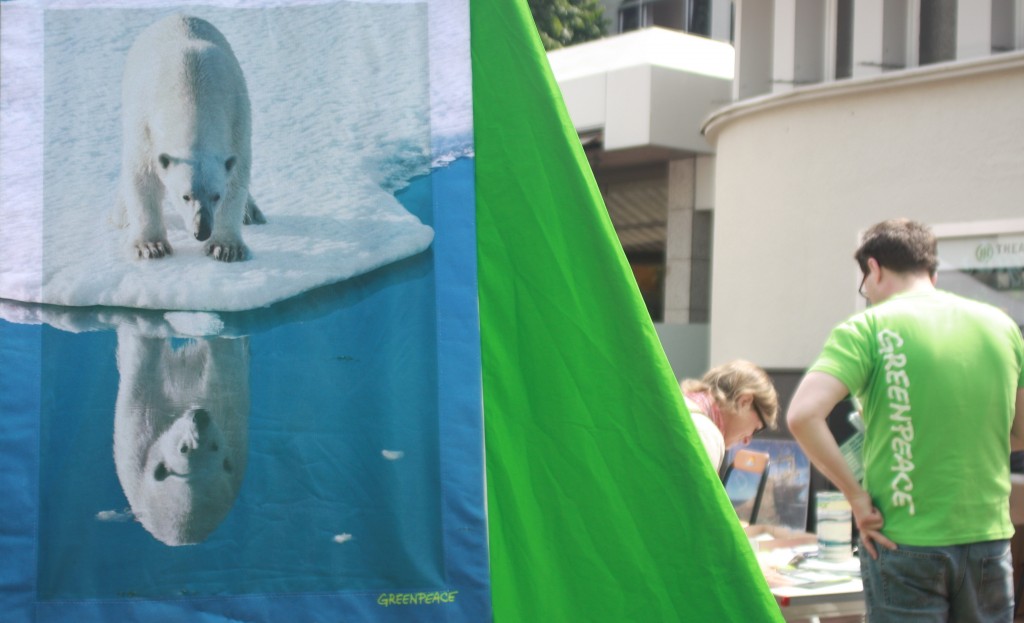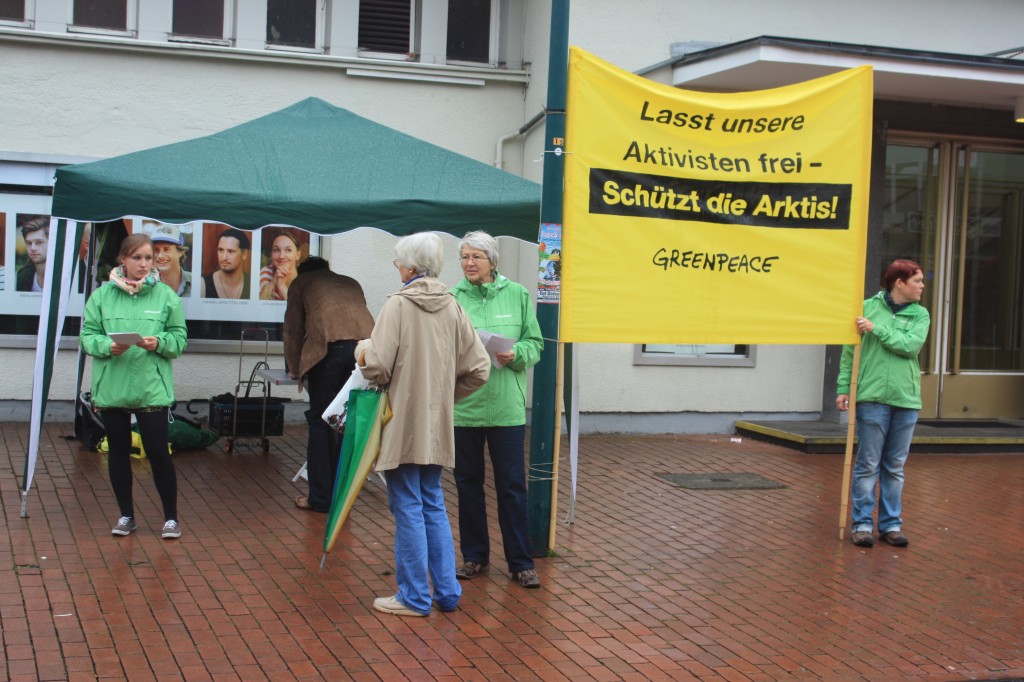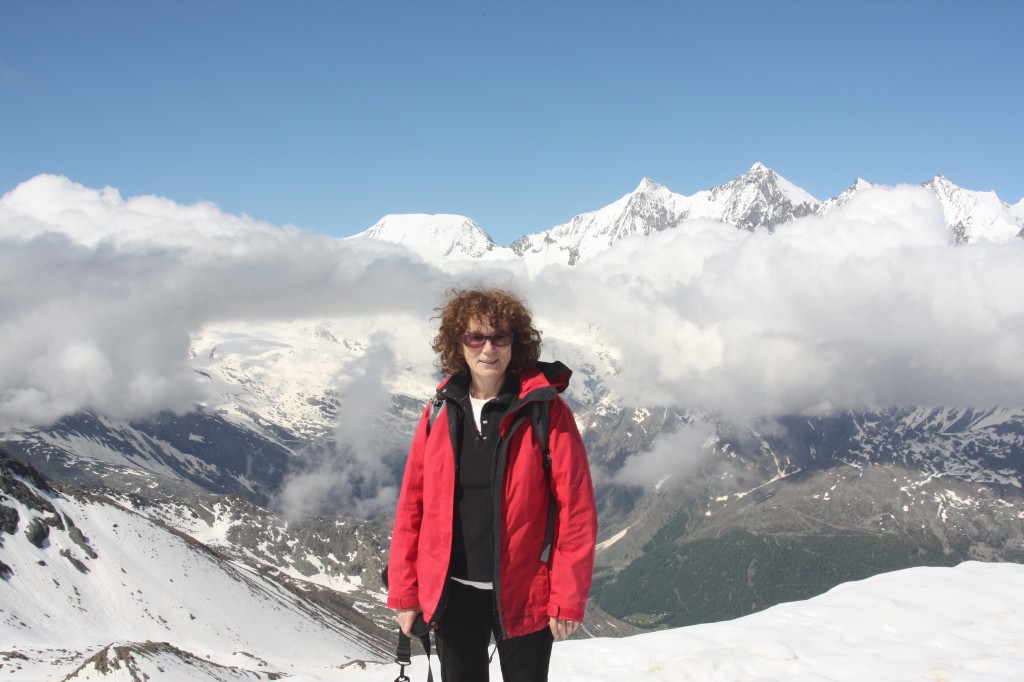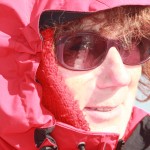“Poles apart” on the Arctic?
Intrigued by a tweet from the British Guardian, “Arctic melt means more pirate chases, say Polish climate hosts”, I clicked on to the website of the organisers of this year’s UN climate talks, to be held in the Polish capital Warsaw next month. Alas, the blog where the offending entry had been posted has been temporarily closed, leaving only this message:
“For the time being we decided to take some time away from our blog. Our idea was to focus attention on important issues that need good solutions and spark discussions on those. We did not foresee that some readers would take the presented texts literally as the official Polish position. Notwithstanding we would like to express regret as some of you found the text to be inappropriate. We acknowledge these criticisms. It was certainly not our aim to offend anybody. We will take due care that all new articles and posts on this website are written in a clear and sensitive manner so as to avoid misunderstandings. Stay tuned for more ideas.”
Unbelievable. The people responsible for the COP19 website have not felt obliged to write carefully up to now? People have been able to put their own “non-official” views on there? Well, the aim of “sparking discussions” has certainly been achieved, if not in the way the conference organisers intended. I will have to refer you to the Guardian if your curiosity is aroused as to what was actually on the blog before it was closed. Let it suffice here to quote the possibility mentioned there of “chasing the pirates, terrorists and ecologists that will come to hang around…” in the developing Arctic. No wonder Greenpeace and WWF amongst others called for the post to be removed. “Pirates, terrorists and ecologists”?
Poland’s hosting of the conference is in itself controversial, given that the country receives almost all its electricity from coal. The conference partners listed on the website include PGE, the Polish Energy Group which runs several coal power plants in the country, including the largest coal-fuelled thermal power plant in Europe, Belchatow.
Poland, you will have to smarten up your act and drastically improve your communications in the run-up to a key conference that should pave the way for emissions reductions in the interest of the Arctic and the rest of the planet. Assuming you are taking this issue seriously?
Greenpeace Arctic Protest in Germany
Greenpeace campaigners were on the streets around the world on Saturday October 5th, protesting against the arrest of the Arctic Sunrise crew by the Russian coastguard. For a short summary of the background, see “Greenpeace holds rallies...” on our DW environment page.
I paid a visit to the stand set up in our local shopping centre, Bad Godesberg, to see what was happening. Greenpeace Bonn were working hard to persuade shoppers on a drizzly October morning to sign the online protest against the arrests. It was interesting to see a mix of younger and more experienced campaigners outside the town theatre. There was also quite a wide age range amongst the passers-by who stopped to find out what was happening or even sign the online petition to have the Arctic Sunrise crew freed.
The controversy has certainly brought a lot of attention to the Arctic. I have the feeling there is a growing awareness here of the whole issue surrounding climate change, melting Arctic ice, and the difficulties involved in the economic development of such an ecologically sensitive area. Still, most people do not realise how relevant the “distant” Arctic is to all of us, given the role it plays in influencing climate change as a whole, our weather patterns and, of course, with the huge Greenland ice sheet, global sea levels.
Ice Blog back online!
Apologies for the absence of icy news on the blog over the past three months. I was collecting new stories and pictures of glacier development in the Swiss Alps during a hiking holiday and unfortunately slipped on some ice. It has taken me three months to recover, but before that I did take plenty of pictures, some of which will be appearing on the blog at some point in the next few weeks. I first visited that particular area in 1984, so have photos as well as memories of the glaciers as they looked then, and now. A comparison shows major changes. Many areas which were then iced over are now completely ice free.
In the meantime, of course, there has been no shortage of news and stories in the world at large relating to the polar regions and climate, including the annual sea-ice minimum measurements and the IPCC report.
As for the sea-ice measurements, the scientists from Germany’s Alfred Wegener Institute say the fact that the sea ice covered a bigger area than last year does not mean the ice pack is recovering. Its extent is still very low compared to the long-term average, and is in line with an overall trend towards less of the stable, thicker multi-year ice. A new study published this week suggests the Arctic will be ice-free in summer within 25 years. See this summary and context from the Climate News Network: Ocean damage is worse than thought.
The IPCC report includes a lot more data on developments at the poles, which was lacking in the last report. Ice melt from the Greenland and Antarctic ice sheets are shown to be playing a much greater role in increasing sea levels than previously thought. There’s a brief summarizing article on the DW environment page.
More on the “state of the ice” in the coming week. Please look out for regular posts from your Ice Blogger again from now on. It’s great to be back in action.
The “big Greenland melt”
- Melting Ice off Greenland.
Just recently I interviewed a scientist who told me he assumed last year’s record melt in Greenland was a one-off thing and not necessarily a result of climate change. Or rather, he said, it was impossible to say until we see whether it actually happens again. Given that the Greenland ice sheet is the biggest ice mass in the northern hemisphere and would also have a huge impact on global sea levels if it melts, it is encouraging to know that a huge effort is going on to find out exactly what is happening.
Ice Blogger’s gallery on climate change in Greenland
Audio feature on climate change in Greenland (Irene Quaile, for DW)
Tim Radford of Climate News Network has just published an article on the subject, with an excellent overview. He quotes scientists from Sheffield, UK, who have come up with a new theory. This is what Tim has to say. I quote at length, as it such a good summary of what has been happening and the possible explanations so far. Thanks Tim Radford and Climate News Network for drawing our attention to the latest research and filling in so much background. Over to you:
“First: the story so far. For a few days in July 2012, almost 97% of the surface of Greenland began suddenly to thaw. This was a melt on an unprecedented scale.
Greenland carries a burden of three million cubic kilometres of ice and even in the summer, most of it stays frozen, partly because of the island’s high latitude and partly because ice reflects sunlight, and tends normally to serve as its own insulator.
The event was so unusual, and so unexpected, and on such a scale that nobody seriously suggested that the dramatic conversion of snow to slush was direct evidence of climate change because of human-induced global warming.
Soot, smoke and heat
At first, climatologists were inclined to see the thaw as a consequence of the record-breaking heat waves and forest fires that afflicted North America last summer: snow could have been darkened by columns of soot and smoke from forest fires, just enough to start absorbing the sunlight, some reasoned.
Then in April a team at the University of Wisconsin-Madison suggested that freak cloud behaviour over Greenland at the time might have caused the melting. Clouds normally block sunlight and keep the terrain below them cool.
But these clouds could have been thin enough to let solar radiation through, but thick enough to trap the consequential infra-red radiation from the ground, and raise the local temperature levels.
Now Edward Hanna and colleagues at Sheffield report in the International Journal of Climatology that they have another explanation. Unusual atmospheric circulation and changes in the jet stream – the same changes that almost washed away summer in England – sent a blister of warm air sweeping over the ice sheet.
Hanna and his team analysed all the weather data collected by the Danish Meteorological Institute and by US researchers, and then employed satellite readings and a computer simulation called SnowModel to reconstruct the strange turn of events. And climate change may after all be a suspect.
High melt years
The Greenland Ice Sheet is a highly sensitive indicator of regional and global change, and, says Prof Hanna, been undergoing rapid warming, and losing ice, for at least the last five years and probably the last 20.
“Our research found that a ‘heat dome’ of warm southerly winds over the ice sheet led to widespread surface melting.” This was not predicted by the climate models used by the Intergovernmental Panel on Climate Change, and perhaps that indicated a deficiency in those models, he suggested.
The event seemed to be linked to changes in a phenomenon known to oceanographers and meteorologists as the summer North Atlantic Oscillation (NAO), another well-observed high pressure system called the Greenland Blocking Index, and the polar jet stream, all of which sent warm southerly winds sweeping over Greenland’s western coast.
“The next five to 10 years will reveal whether or not 2012 was a rare event resulting from natural variability of the NAO or part of an emerging pattern of new extreme high melt years.” It was hard to predict future changes in the Greenland climate in the current state of knowledge, but important to keep on trying.
There is an awful lot of ice on top of Greenland. Once it starts to melt, it is likely to be, say the Sheffield scientists, “dominant contributor to global sea level change over the next 100 to 1,000 years.”
Tim Radford, Climate News Network, 18.6.2013.
The Ice Blogger is heading off for a short break. Back July 8th, with new ice and snow pictures, I hope!
Climate Reality in Istanbul
GUEST BLOG:
As promised in the last blog posting, climate activist Cara Augustenborg has written up some impressions from her meeting with “Climate Reality Leaders” from around the globe in Istanbul. Thank you Cara! Over to you:
This week I had the honour of becoming a part of former U.S. vice president Al Gore’s global action on climate change, the Climate Reality Project. I now join over 5,000 other Climate Leaders from around the world in presenting the Climate Reality message, an updated version of Mr. Gore’s presentation from the 2006 movie, An Inconvenient Truth , to my community and anyone else who will listen.
Over 600 of us from 94 countries gathered in Taksim, Istanbul last weekend to receive training from Mr. Gore and the Climate Reality team and develop the necessary skills to bring a real understanding of the climate crisis to the world. It was a fitting location for so many environmental activists and educators to gather, given its proximity to the ongoing Occupy Gezi movement. As we equipped ourselves with the skills necessary to create action on climate change, Turkish protesters in nearby Gezi Park fought to win their own environment and democracy struggles. Many of us were caught in the middle of that struggle during the worst police clash last Saturday night. I’ll describe that frightening experience in an upcoming blog post on my own site.
Our Climate Reality training lasted 2.5 days and covered everything from communication skills, climate impacts, and social media, but of course the highlight of the weekend was the chance to spend ten hours in Al Gore’s presence soaking up every morsel of knowledge he could give us in that time. As Vice President of the United States, Mr. Gore was often referred to as wooden and robotic in his speaking style, but when it comes to climate-related issues, he is far from either and his style sometimes resembles that of a Baptist preacher when he gets really passionate about a topic. The audience could not get enough of Mr. Gore’s enthusiasm and motivational words, and at times, I was moved to tears as he inspired me to do more to win the conversation” on climate change.
The scale of The Climate Reality Project is impressive. In a 2006 Today Show interview, Al Gore said he aimed to teach 100 people to give his slideshow presentation and spread the word on climate change. Seven years later, he has trained over 5,000 of us to help our communities to understand the connection between over-reliance on fossil fuels and our changing climate. By the end of this summer, we will be nearly 6,000 strong. Given the financial resources of the climate change denial industry, the unique grassroots approach of the Climate Reality Project is embracing a philosophy that the number of people fighting for a cause will win over the number of euros invested in fighting against that cause. In our own group of 600+ delegates, we certainly felt more empowered to enact change now, with our new support of a worldwide climate change “family”, than we did before we arrived.
If you have seen “Inconvenient Truth”, you already know a lot of the background to Al Gore’s presentation, but there was lots of new information he presented over the weekend that surprised me, particularly regarding new evidence on the impacts of climate change and some exciting ways that countries (particularly developing countries) are both mitigating and adapting to climate change. I will be blogging about these issues on my own site over the coming weeks and thousands of us are available to present the new Climate Reality message in person by booking a presentation in your own area through the Climate Reality website






























Feedback